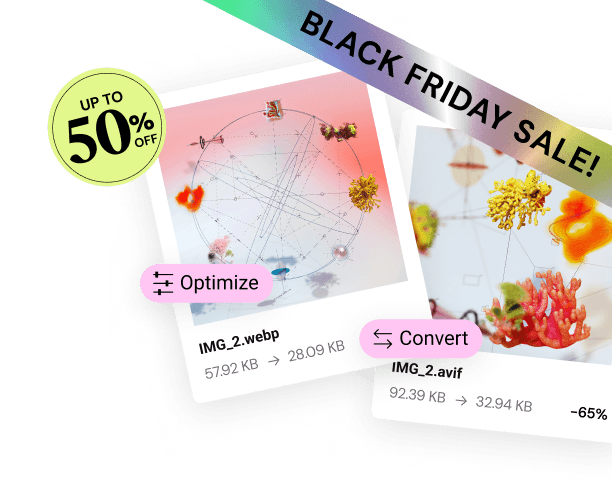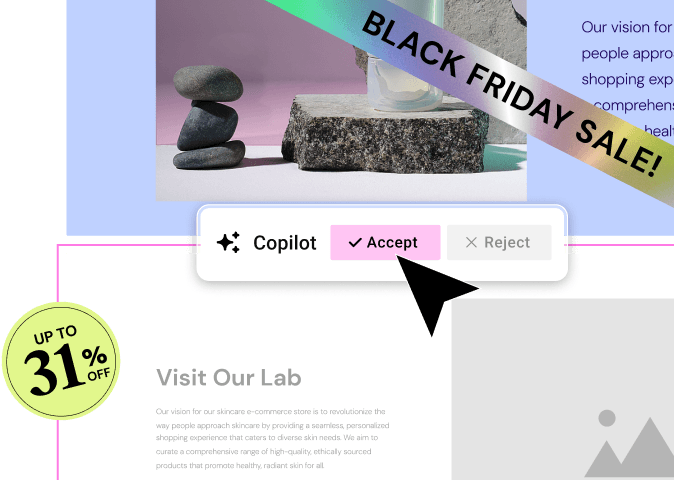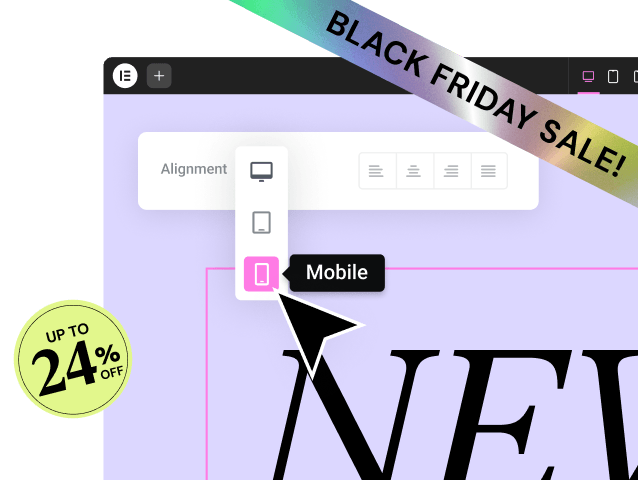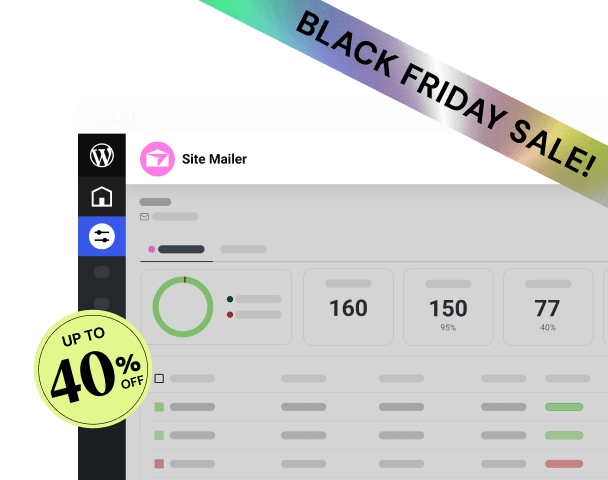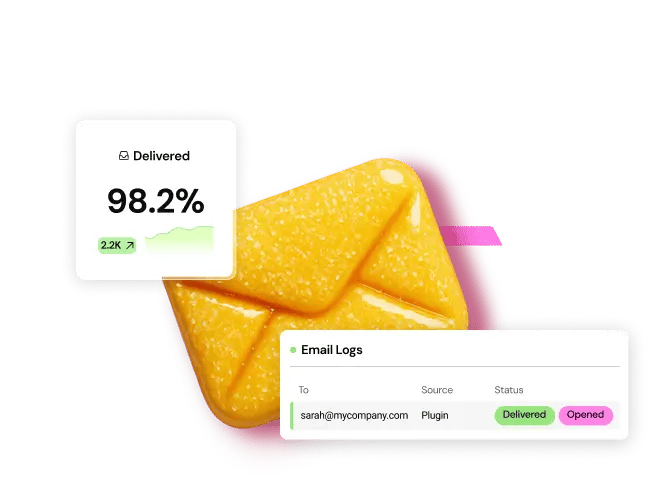Table of Contents
But staring at a blank screen and figuring out how to best represent your professional journey can be a challenge. That is why we have compiled this list of more than 15 outstanding portfolio websites. We will break down what makes each one effective, from their stunning visuals and compelling case studies to their seamless user experience. You will find inspiration here to help you build a portfolio that not only looks incredible but also works hard for your career.
Key Takeaways
- Tell a Compelling Story: Your portfolio should be more than a collection of images. Use your “About” page, project descriptions, and overall design to narrate your professional journey and showcase your unique perspective.
- Prioritize User Experience (UX): A great portfolio is easy to navigate. Ensure visitors can find your work, learn about you, and contact you without any friction. A clean, intuitive layout is essential on all devices.
- Showcase, Don’t Just Tell: Use high-quality visuals and detailed case studies to demonstrate your skills. Explain the problem, your process, and the results you achieved for each project.
- Let Your Personality Shine: The best portfolios feel authentic. Infuse your personality into the design, copy, and project selection to create a memorable and personal brand.
- Have a Clear Call to Action (CTA): Guide your visitors on what to do next. Whether it is “Contact Me,” “View My Work,” or “Download My Resume,” make the next step obvious and easy to take.
- Quality Over Quantity: It is better to feature a few of your best projects with in-depth case studies than a large collection of mediocre work. Curate your portfolio to reflect the kind of work you want to do more of.
What Makes a Portfolio Website Truly Great?
Before we jump into the examples, let’s establish the criteria for an exceptional portfolio. The most effective portfolios masterfully blend several key elements to create a powerful and persuasive experience for the visitor. Keep these principles in mind as you look through the examples and begin planning your own site.
- Unique Personal Branding: A strong portfolio immediately communicates who you are and what you do. This is achieved through a consistent visual identity, including logos, color schemes, and typography, as well as a distinct tone of voice in the written content.
- Engaging Case Studies: The heart of any portfolio is the work itself. Great portfolios present projects as case studies that detail the challenge, the process, and the solution. This shows not just the final product but also the strategic thinking behind it.
- High-Quality Visuals: Crisp, professional, and well-presented visuals are non-negotiable. This applies to project mockups, photography, and even the user interface of the portfolio site itself.
- Intuitive Navigation and UX: Visitors should be able to move through your site effortlessly. A logical structure, clear menu, and responsive design for mobile devices are crucial for keeping users engaged.
- A Clear Call to Action (CTA): What do you want visitors to do after they have viewed your work? A great portfolio guides them to the next step, whether that is filling out a contact form, scheduling a call, or connecting on social media.
15+ Portfolio Examples That Set the Standard
Now, let’s explore some of the best portfolio examples from a range of creative professionals. We will analyze what makes each one stand out and identify a key takeaway you can apply to your own site.
1. Bruno Simon
Bruno Simon is a French creative developer whose portfolio is famous in the web development community for its sheer creativity and interactivity. Instead of a traditional webpage, his portfolio is a playable 3D game where you drive a small jeep through a world that represents his projects and skills.
What Makes It Great
- Interactive Experience: The portfolio is an unforgettable experience. Visitors actively engage with his work by “driving” through it, making it far more memorable than a static page.
- Skill Demonstration: The portfolio itself is the ultimate demonstration of his skills in 3D modeling and web development. He is not just telling you he is a great developer; he is proving it in a fun and tangible way.
- Playful Personality: The style is fun and lighthearted, which reflects his personality and makes him seem approachable and creative.
Key Takeaway
Show, do not just tell. Find a creative way to demonstrate your core skills through the design and functionality of your portfolio website itself.
2. Jacek Jeznach
Jacek Jeznach is a front-end developer and creative technologist. His portfolio is a masterclass in minimalism, interaction, and clean design. It uses bold typography, a simple color palette, and subtle animations to create a sophisticated and engaging experience.
What Makes It Great
- Bold Minimalism: The design is clean and uncluttered, which puts the focus squarely on his work and his message. The use of large, confident typography makes a strong impression.
- Microinteractions: Hover effects, smooth page transitions, and subtle animations make the site feel alive and responsive. These small details add a layer of polish that signals a high level of craft.
- Clear Hierarchy: The information is structured logically. It is easy for a visitor to understand who he is, what he does, and how to view his work.
Key Takeaway
Attention to detail matters. Polished microinteractions and a clean, minimalist design can make your portfolio feel professional and high-end.
3. Active Theory
Active Theory is a digital creative agency, and their portfolio is a stunning showcase of their technical and artistic capabilities. It features a highly immersive and interactive 3D homepage that immediately grabs the visitor’s attention.
What Makes It Great
- Immersive First Impression: The website opens with a visually striking, interactive 3D experience that sets the tone for their cutting-edge work. It acts as a powerful hook.
- High-Impact Case Studies: Each project is presented with high-quality video, imagery, and a concise description of the results they delivered for the client.
- Clear Agency Branding: The entire site feels cohesive and reinforces their brand as an innovative and technically proficient agency.
Key Takeaway
Make a strong first impression. Use your homepage to create a “wow” moment that immediately communicates your unique value proposition.
4. Malika Favre
Malika Favre is a French artist and illustrator based in London. Her portfolio is a bold, colorful, and elegant showcase of her distinctive illustration style. The design of the site perfectly complements her work.
What Makes It Great
- Visually Driven: The portfolio is all about the art. It uses a grid-based layout that allows her vibrant illustrations to take center stage.
- Brand Consistency: The website’s design, with its bold colors and clean lines, mirrors the aesthetic of her illustrations, creating a cohesive and powerful brand identity.
- Simple Navigation: The navigation is straightforward, with clear categories like “Work,” “Shop,” and “About,” allowing visitors to easily explore her art and learn more about her.
Key Takeaway
Let your work be the hero. Design your portfolio in a way that complements your creative style and allows your best pieces to shine.
5. Timmy O’Mahony
Timmy O’Mahony is a product designer whose portfolio focuses on clear, detailed case studies. He takes visitors through his entire design process, from research and ideation to final execution and impact.
What Makes It Great
- In-Depth Case Studies: He does not just show the final design. He explains the “why” behind his decisions, showcasing his problem-solving skills and strategic thinking.
- Focus on Results: He includes metrics and outcomes for his projects, demonstrating the tangible value his work brings to businesses.
- Clean and Readable Layout: The portfolio uses a clean layout with clear typography, making the detailed case studies easy to read and digest.
Key Takeaway
Tell the story behind each project. A detailed case study that outlines your process and results is far more persuasive than a simple image.
6. Melanie DaVeid
Melanie DaVeid is a photographer specializing in interiors and portraits. Her portfolio is elegant and atmospheric, using large, high-resolution images to create an immersive visual experience that reflects the quality of her photography.
What Makes It Great
- Full-Screen Imagery: The site uses large, beautiful images to immediately draw the visitor into her work. This is crucial for a photographer’s portfolio.
- Atmospheric Design: The minimalist design, refined typography, and color palette all work together to create a mood that complements her photographic style.
- Logical Organization: Her work is neatly categorized, allowing potential clients to quickly find the type of photography they are interested in.
Key Takeaway
If your work is visual, make it big and beautiful. Use high-resolution, full-width images to create an immersive and impactful experience.
7. Sean Halpin
Sean Halpin is a web designer and developer who creates websites for startups. His portfolio has a friendly and approachable tone, which is reflected in both the copy and the hand-drawn illustrations.
What Makes It Great
- Approachable Personality: The conversational copy and unique illustrations make him seem like a real person, not a faceless service provider. This helps build trust and rapport with potential clients.
- Clear Value Proposition: He clearly states who he helps (startups) and what he does for them. His messaging is focused and easy to understand.
- Social Proof: He includes testimonials from happy clients, which adds credibility and reassures potential customers.
Key Takeaway
Inject your personality into your portfolio. A unique and authentic voice can help you connect with your ideal clients on a personal level.
8. Olaolu Slawn
Olaolu Slawn is a multi-disciplinary artist, and his portfolio is as unconventional and rebellious as his art. It breaks traditional web design rules with chaotic layouts, overlapping elements, and a raw, unpolished aesthetic.
What Makes It Great
- Authentic Reflection of His Art: The website’s design is a direct extension of his artistic style. It is chaotic, energetic, and memorable.
- Breaks the Mold: In a sea of clean, grid-based portfolios, his stands out for its willingness to be different. It is an immediate attention-grabber.
- Focus on a Feeling: The portfolio is less about usability and more about conveying a feeling and an attitude, which perfectly aligns with his brand as an artist.
Key Takeaway
Do not be afraid to break the rules if it serves your brand. An unconventional design can be a powerful way to stand out and attract a specific audience.
9. Kenta Toshikura
Kenta Toshikura is an art director and designer. His portfolio is a sleek, modern, and highly polished presentation of his work for major brands. It uses a dark theme and subtle, sophisticated animations to create a premium feel.
What Makes It Great
- Premium Aesthetic: The dark mode, clean typography, and smooth animations give the site a high-end, professional look that aligns with the premium brands he works with.
- Video Integration: He effectively uses video to showcase his interactive and motion design projects in action.
- Concise Project Descriptions: The project descriptions are brief and to the point, letting the high-quality visuals do most of the talking.
Key Takeaway
A dark theme can create a sense of sophistication and modernity. Pair it with high-quality visuals and subtle animations for a premium feel.
10. Stefanie Brückler
Stefanie Brückler is a graphic designer and illustrator. Her portfolio is charming and elegant, with a soft color palette and a focus on beautiful typography. It feels both professional and personally curated.
What Makes It Great
- Elegant Typography: The portfolio showcases a masterful use of typography, which serves as a design element in itself and demonstrates her skills as a graphic designer.
- Cohesive Color Palette: The consistent use of a warm and inviting color scheme throughout the site creates a pleasant and memorable brand experience.
- Well-Curated Projects: She presents a focused selection of her work, which gives her portfolio a clear and specialized feel.
Key Takeaway
Your typography choices matter. Use beautiful and readable fonts to elevate your design and reflect your personal brand.
11. Ed Saperia
Ed Saperia is a developer and technologist. His portfolio is text-based and straightforward, looking almost like a simple document. This unconventional approach works because it directly reflects his no-nonsense, technically focused brand.
What Makes It Great
- Purposeful Simplicity: The stripped-back design is a deliberate choice. It communicates that he prioritizes substance, clarity, and technical excellence over flashy visuals.
- Focus on Content: The lack of design distractions forces the visitor to focus on the content of his projects and his impressive list of accomplishments.
- Confidence: This type of minimalist design takes confidence. It says, “My work is so good, it does not need a fancy package.”
Key Takeaway
Align your portfolio’s design with your professional identity. For a technical role, a clean, content-focused design can be more effective than a visually elaborate one.
12. Locomotive
Locomotive is a digital-first design agency based in Montreal. Their portfolio is a testament to their award-winning work, featuring smooth scrolling effects, beautiful transitions, and impeccable attention to detail.
What Makes It Great
- Award-Winning Polish: The entire site feels incredibly polished and professional. The animations and interactions are seamless and sophisticated.
- Impactful Storytelling: They use compelling copy and visuals to tell the story of their agency and their design philosophy.
- Strong Case for a High-End Agency: Every element of the site, from the design to the copy, works to position them as a top-tier agency that delivers exceptional results.
Key Takeaway
Invest in polish. Smooth animations and seamless transitions can elevate the user experience and make your portfolio feel more professional and valuable.
13. Gary Sheng
Gary Sheng is a software engineer and his portfolio functions more like a personal wiki or digital garden. It is a simple, text-heavy site that deeply outlines his philosophies, projects, and experiences.
What Makes It Great
- Authenticity and Transparency: The portfolio is incredibly detailed and personal. He shares not just his work, but his thoughts, values, and learning process, which builds a deep sense of trust.
- Value-Driven: Instead of just showcasing what he can do, he focuses on what he believes in and the impact he wants to make. This attracts like-minded collaborators and employers.
- Long-Form Content: The site is a rich resource, showing his depth of knowledge and his ability to communicate complex ideas clearly.
Key Takeaway
Your portfolio can be a place to share your thoughts and values. Writing about your philosophy and process can attract opportunities that are a better cultural fit.
14. Chris Wilcock
Chris Wilcock is a freelance designer and art director. His portfolio is clean, bold, and straight to the point. He uses a simple grid layout and large thumbnails to make his work easily scannable.
What Makes It Great
- Scannable Layout: The grid layout allows recruiters and potential clients to quickly get an overview of his work and style.
- Clear Contact Information: His contact information and availability are prominently displayed, making it easy for interested parties to get in touch.
- Professionalism: The site is no-frills and professional. It communicates that he is an experienced designer who is serious about his work.
Key Takeaway
Make it easy for busy people to hire you. A clear, scannable layout and prominent contact information can reduce friction and increase inquiries.
15. The Go-To Guy
This portfolio for a copywriting service uses humor and a strong, distinctive voice to stand out. The design is simple, but the copy is the star of the show, immediately demonstrating the value of their service.
What Makes It Great
- Copy-Driven Design: The entire portfolio is built around showcasing their copywriting skills. The headlines are punchy, the body copy is engaging, and the calls to action are persuasive.
- Unique Voice: They have a clear and memorable brand voice that is confident and humorous. This makes them instantly stand out from more corporate-sounding competitors.
- Focus on Benefits: The copy consistently focuses on the benefits for the client (e.g., “more sales,” “happier customers”), not just the features of the service.
Key Takeaway
If you are a writer, your portfolio website is your most important writing sample. Use it to show off your skills and establish a unique brand voice.
16. Studio Feixen
Studio Feixen is a design studio based in Switzerland. Their portfolio is experimental and playful, featuring bold typography, bright colors, and interactive elements that invite visitors to play and explore.
What Makes It Great
- Interactive and Playful: The site is full of fun, interactive elements that make browsing their work an engaging experience.
- Bold Visual Identity: They have a strong and recognizable visual style that is consistently applied across the entire site.
- Creative Confidence: The experimental nature of the portfolio showcases their creative confidence and their ability to think outside the box.
Key Takeaway
Have fun with your portfolio. An element of playfulness can make your brand more memorable and show that you are a creative thinker.
How to Build Your Own Standout Portfolio Website
Feeling inspired? Now it is time to channel that inspiration into creating your own portfolio. Building a website from scratch might sound daunting, but with the right tools and approach, you can create a professional and effective portfolio without writing a single line of code.
Step 1: Define Your Goal and Audience
Before you do anything else, ask yourself two questions:
- Who is this portfolio for? Are you trying to attract creative directors at large agencies, small business owners, or recruiters at tech companies? Your target audience will determine the tone, style, and content of your site.
- What do I want them to do? Is your primary goal to get freelance inquiries, land a full-time job, or sell your art? Your goal will define your call to action.
Step 2: Curate Your Best Work
This is the most critical step. Resist the temptation to include every project you have ever worked on. Instead, select a handful (3-6) of your best and most relevant pieces.
- Quality over quantity: Choose projects that you are proud of and that best demonstrate the skills you want to be hired for.
- Create detailed case studies: For each project, do not just show the final result. Write a case study that explains:
- The Problem: What was the client’s challenge or goal?
- The Process: What was your role? What steps did you take? Show sketches, wireframes, or behind-the-scenes photos.
- The Solution: How did your work solve the problem?
- The Results: If possible, include metrics, testimonials, or positive outcomes.
Step 3: Tell Your Story
Your “About Me” page is often the second most visited page on a portfolio. Use it to connect with visitors on a human level.
- Go beyond your resume: Talk about your passion, your creative philosophy, and what makes you unique.
- Be professional but personal: Share a bit about your interests outside of work. This makes you more relatable.
- Include a professional photo: A good headshot helps build trust and makes your site feel more personal.
Step 4: Choose the Right Platform and Tools
You need a platform that gives you both creative control and technical stability. For this, the combination of WordPress and Elementor is an ideal choice for creative professionals. WordPress provides a powerful and flexible foundation, while Elementor is a visual, drag-and-drop website builder that lets you design your portfolio exactly how you envision it, with no coding required.
As web creation expert Itamar Haim notes, “The best portfolio is a living document. Your tools should allow you to update and refine it effortlessly. A platform like WordPress combined with a visual builder like Elementor gives creatives the power to control their narrative without getting bogged down by technical limitations.”
You can start with a pre-designed template from the Elementor Library to get a head start, or use a minimalist framework like the Hello Theme to build your design from a clean slate. For even faster creation, you can use Elementor AI to generate text and images directly within the editor.
To ensure your portfolio loads quickly and is always online, a reliable hosting solution is critical. Elementor Hosting is optimized specifically for Elementor websites, providing a fast, secure, and all-in-one solution that takes the technical guesswork out of the equation.
Step 5: Design for the User
Your portfolio’s design should be beautiful, but it must also be functional.
- Simple Navigation: Create a simple menu (e.g., Work, About, Contact) that is easy to find and use.
- Mobile First: A significant portion of your traffic will come from mobile devices. Ensure your site looks and works perfectly on phones and tablets. Elementor’s responsive editing mode makes this easy to control.
- Accessibility: Design your site so that it can be used by everyone, including people with disabilities. This includes using readable fonts, providing good color contrast, and adding alt text to images. Tools like the Ally by Elementor plugin can scan your site and help you fix accessibility issues.
Step 6: Optimize and Launch
Before you share your portfolio with the world, run through this final checklist:
- Optimize Your Images: Large images can slow down your site. Use a tool like the Image Optimizer plugin to compress your images without losing quality.
- Set Up a Contact Form: Make it as easy as possible for people to contact you. Use Elementor’s Form Builder to create a simple contact form. To ensure those important emails are always delivered, a service like Site Mailer by Elementor can handle your transactional emails reliably.
- Proofread Everything: Typos and broken links look unprofessional. Read through all of your copy carefully, and click every link to make sure it works.
- Basic SEO: Set a clear title and meta description for your homepage so that people can find you on Google. For example, “Jane Doe | UX Designer & Strategist | Portfolio.”
Frequently Asked Questions (FAQ)
1. How many projects should I include in my portfolio? It is best to showcase 3-6 of your strongest projects. Quality is far more important than quantity. Choose projects that highlight the skills you want to use in your next role and that are relevant to the clients you want to attract.
2. Should I include personal projects? Absolutely! Personal projects are a fantastic way to showcase your passion, creativity, and skills, especially if you do not have a lot of client work yet. They can demonstrate your ability to take a project from concept to completion on your own initiative.
3. What is the most important page on my portfolio website? While your homepage and project pages are crucial, do not underestimate the “About Me” page. It is your chance to connect with the visitor on a personal level, share your story, and explain your unique value. Many potential clients and recruiters make their final decision based on the connection they feel on this page.
4. How do I write a compelling case study? A great case study follows a clear narrative structure:
- The Challenge: Start by outlining the problem or goal.
- The Process: Detail your role and the steps you took. Show your work (sketches, wireframes, etc.).
- The Solution: Present your final work and explain how it solved the initial challenge.
- The Results: Quantify the impact of your work with data, metrics, or a client testimonial if possible.
5. How often should I update my portfolio? You should treat your portfolio as a living document. Plan to review and update it every 6-12 months, or whenever you complete a new project that you are proud of. This ensures it always reflects your current skills and career goals.
6. Do I need a custom domain name? Yes. A custom domain (e.g., yourname.com) looks far more professional than a generic one (e.g., yourname.wordpress.com). Many hosting plans, including some Elementor Hosting plans, even offer a free domain name for the first year.
7. How can I make my portfolio stand out from the competition? The best way to stand out is to be authentic. Let your personality shine through in your design, your writing, and your project selection. Tell your unique story. Also, focus on creating high-quality, in-depth case studies that demonstrate not just what you created, but the strategic thinking behind it.
8. Should I put my prices on my portfolio? This depends on your industry. For some freelancers (like writers or photographers), listing starting prices or packages can help pre-qualify clients. For others (like agency-level designers or developers), it is often better to encourage a conversation to scope out the project first. If you are unsure, leave them off and focus on a clear call to action to “Request a Quote.”
9. What should I do if I don’t have any client work to show? If you are just starting out, create your own projects. Redesign a popular app, create a branding concept for a fictional company, or build a website for a local non-profit. These self-initiated projects are a perfect way to demonstrate your skills and build your portfolio.
10. How important is a blog on a portfolio website? A blog is not essential, but it can be a powerful tool. Writing about your process, industry trends, or design insights can establish you as an expert in your field. It also helps with SEO, drawing more organic traffic to your site. If you enjoy writing, it is a great addition.
It’s Time to Build Your Digital Showcase
A well-crafted portfolio is more than just a requirement; it is an opportunity. It is your chance to take control of your professional narrative, showcase your unique talent, and make a powerful first impression that opens doors to exciting new projects and collaborations.
The examples we have explored show that there is no single formula for success. The best portfolios are those that are authentic, user-friendly, and strategically designed to achieve a specific goal. By defining your audience, curating your best work, telling your story, and using powerful tools like Elementor, you have everything you need to build a portfolio that truly represents you.
Do not wait for the perfect moment. Start today. Your next great opportunity could be just one click away.
Looking for fresh content?
By entering your email, you agree to receive Elementor emails, including marketing emails,
and agree to our Terms & Conditions and Privacy Policy.


